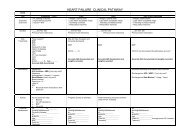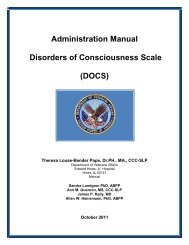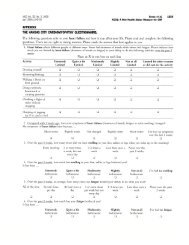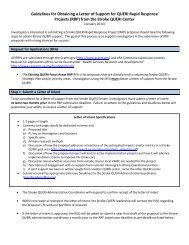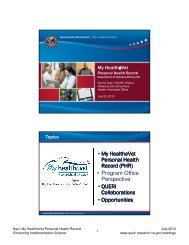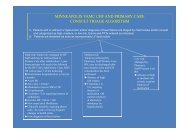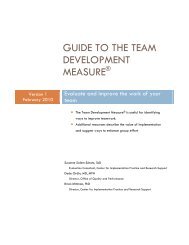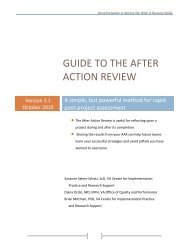The Veteran Supported Education Service Treatment Manual: VetSEd
The Veteran Supported Education Service Treatment Manual: VetSEd
The Veteran Supported Education Service Treatment Manual: VetSEd
Create successful ePaper yourself
Turn your PDF publications into a flip-book with our unique Google optimized e-Paper software.
As a general rule, it is better to seek and gain information about schools from multiple<br />
sources, as opposed to relying on just one. Many <strong>Veteran</strong>s, particularly OIF/OEF/OND<br />
<strong>Veteran</strong>s, might choose to search out information about schools through the internet.<br />
Online searches of college Web sites is a good initial recon method to use. Most college<br />
Web sites have information about programs of study offered, available student support<br />
services, tuition and fee costs as well as admission requirements and deadlines. Beyond<br />
online searches, it will be worthwhile for the <strong>Veteran</strong> to recon further by a) attending any<br />
admissions or college fairs in the local area; b) visiting the campus and meeting with<br />
admissions, faculty, relevant disability services staff and current students; and c)<br />
speaking with people who have graduated from the school. Worksheet #6: School Choice<br />
Checklist: Possible Questions for Campus Visit contains a list of questions that <strong>Veteran</strong>s<br />
might consider asking school representatives during a campus visit. It may be helpful to<br />
the <strong>Veteran</strong> for you to accompany him/her on one or more of these recon missions to take<br />
notes, provide encouragement or otherwise serve as a familiar face in an otherwise<br />
unfamiliar environment. As with all aspects of <strong>VetSEd</strong>, you should provide information<br />
to the <strong>Veteran</strong> about how you can be of assistance with recon and let the <strong>Veteran</strong> choose<br />
what level of assistance s/he prefers from you.<br />
Once a <strong>Veteran</strong> has made a decision about his/her top 2-3 choices, s/he should meet with<br />
school admissions personnel to discuss the specific programs of study, the courses<br />
required, the estimated time to complete the course of study, and internships required.<br />
This will give the <strong>Veteran</strong> get detailed information about what the path to their education<br />
goal will look like. At this point, it might also be useful to conduct informational<br />
interviews with current students in the program, professors or recent graduates who can<br />
talk about how well the program of study prepared them for their current careers. <strong>The</strong><br />
school‘s transition office or career placement office should also have information about<br />
the percentage of students who completed their degree program and entered the<br />
workforce in their chosen field or entered graduate school, etc.<br />
iv.<br />
Course Load Considerations<br />
As returning <strong>Veteran</strong>s progress towards their educational goals they will undoubtedly<br />
face decisions regarding course load. Course load is the number of classes or credit hours<br />
a <strong>Veteran</strong> takes per academic semester or term. Course load is used to determine whether<br />
a <strong>Veteran</strong> is enrolled full or part time. As a peer <strong>VetSEd</strong> provider, you should ask<br />
<strong>Veteran</strong>s about their current or intended course load. As you discuss course load with<br />
<strong>Veteran</strong>s it is worthwhile to take the following into consideration:<br />
Course load relates to financial aid and <strong>Veteran</strong> benefits. For example, <strong>Veteran</strong>s<br />
can be enrolled in as few as one course per semester and the GI Bill will pay for<br />
that course. However, in this instance they will not receive a housing allowance<br />
and, regardless of the number of courses completed, the maximum number of<br />
months of GI Bill benefits is 36.<br />
42 | P a g e



